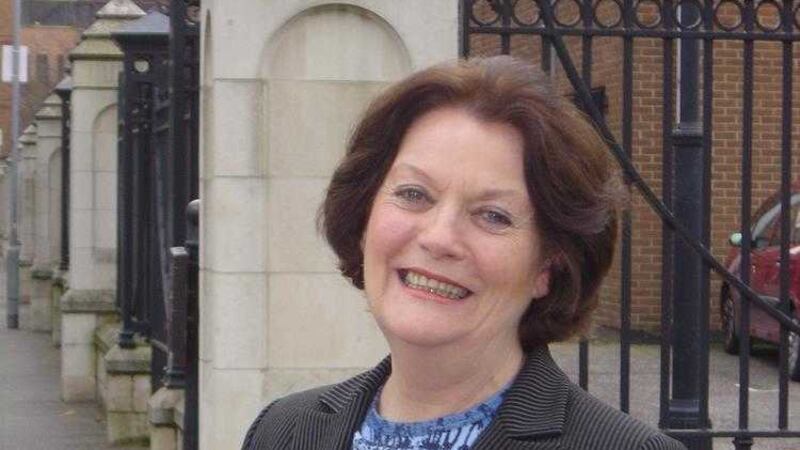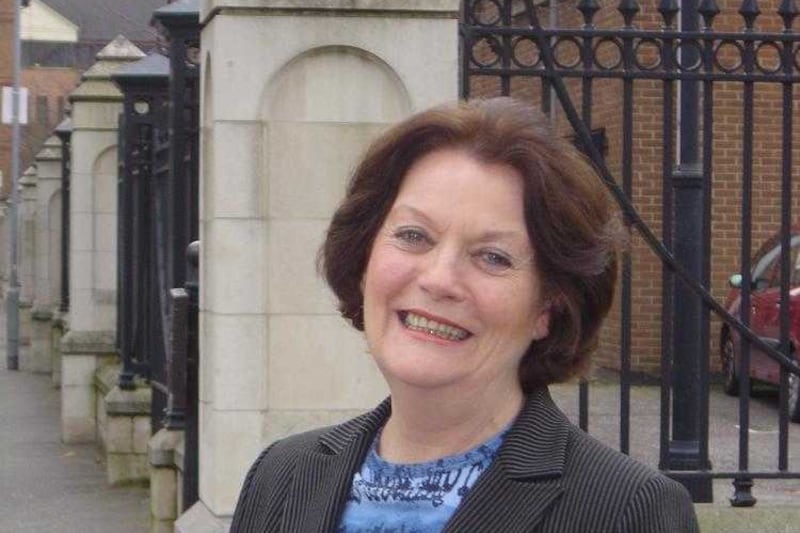THIS month a special exhibition opens in Carrickfergus Town Hall Civic Centre, the painstaking work of a local woman who now lives in France.
Two years ago Patricia Hawkins-Windsor and her husband Peter embarked on a mission to remember those young men from her home town who lost their lives during the First World War.
During an emotional journey they visited the war graves to photograph and recorded those of Carrickfergus men.
In January, towards the end of their dedicated project, quite by chance they came across the very spot the famous Christmas Truce took place.
“It’s quite near the Ireland Peace Tower and Messines Ridge where thousands of Northern Ireland boys were killed.
"Like many of our visits, the wind, rain, mud and snow were unbelievable that day and I wonder what it must have been like for those young soldiers.”
She wrote to me about her venture.
“It is sobering to think that this homage to our Carrickfergus boys lying in Flanders Fields has been inspired by one quiet moment in my life.
"As an eight-year-old child walking in Legg Park with my father, Eric M Windsor, he explained to me the reason for the memorial there to Charles Legg who enlisted in 1915 when he was 22 year of age and died in 1918 as the result of a serious injury when riding his horse on the field of battle in Bavinchove, northern France.”
After her marriage in the early 1960s to the late Maurice McBride, a ‘Mackies’ man, the couple sailed to India to settle in Calcutta where she worked with the British High Commission during the week and with Mother Theresa on Saturdays.
When Maurice was moved to France to look after the Benelux Countries and north Africa, they, and their two young sons, lived in Lille near the Belgian Border.
“On Sundays we got to know the countryside around us and found that the town of Ypres in Belgium wasn’t too far away.
"We also joined St George’s Memorial Church built in the centre of Lille in memory of loved ones lost in the First World War. I was invited to be its licensed lay assistant taking part in many special events which included meeting Her Majesty The Queen and interviewing the last World War One veteran – Harry Patch aged 104 – on his final visit to Toc.H in Poperinghe. I also established a long friendship with Earl Haig’s son.”
Her interest in the 1914-1918 war deepened.
“On three unforgettable occasions I said the graveside prayers during the burials in Ypres of 50 First World War soldiers – only 'Known onto God' – it still haunts me to this day wondering if one of them could have been my own great-great uncle who lost his life in Passchendaele.”
Today she is vice-chairman of St George’s and recently attended the 30,000th rendering of The Last Post which is sounded every evening at 8pm at the Menin Gate in Ypres. The traffic stops and the bugles sound.
In recognition of her work through the years, Patricia became British consul and the bishop’s lay assistant, playing host to thousands who come to visit the war graves.
Through her dedication to the veterans she became involved with Belgium’s soldiers, seamen, airmen and members of the resistance and with the Belgium Prisoner of War Association, the national federation of Belgium war volunteers who incidentally trained in Carrickfergus during the Second World War.
In 2004, in gratitude for this work she received a prestigious honour from His Majesty Albert II, King of the Belgians, who in recognition of outstanding services to the country awarded her the insignia of Knight of the Order of Leopold II and she became Dame Patricia McBride-Windsor MBE.
“In 2014 I mentioned to my husband Peter (we both having been widowed), that, as we lived in Flanders Fields, why not try to visit as many of the huge number of graves of the Carrick Boys who had never returned and to pay respect and homage to those resting places on behalf of their loved ones who had never been able to do so themselves.”
So began their search – Flanders Fields, the Ypres Salient, Passchendaele and The Somme and Gallipoli.
Having then contacted the Commonwealth War Graves Commission in Ypres, they visited Carrick churches and sailing club checking over lists with their Rolls of Honour.
She writes that she was always very aware of what they were doing – so many graves and memorial panels commemorating the Carrick men’s resting places which were perhaps being visited for the first time – buried in 'a Foreign Field'.
“During each visit I said The Lord’s Prayer, and often ‘spoke’ to the boys about home. It was very emotional. I happened once, in December, to find a single primrose on a Carrick lad’s grave in Belgium with no other flowers in sight – it was as if he was expecting me.
"Another special moment came in Loos when I noted that it was 100 years to the day when the 20-year-old buried there had been killed.
"Also in Loos we found one young Carrick soldier buried alongside Rudyard Kipling’s son and a most poignant moment was finding two local lads graves side-by-side.
"Always I laid British Legion Cross on each grave and memorial panel – each bearing the Carrickfergus Coat of Arms and the inscription ‘In Grateful Remembrance from The Citizens of Carrickfergus’. We always visited the cemeteries mid-week and strangely enough never saw any visitors there, just the gardeners.”
In one cemetery in The Somme on the road to Doullens, while visiting Samuel Kane’s grave, the couple walked a little further and discovered Lieutenant Lionel Lupton’s resting place, the great-great-great uncle of The Duchess of Cambridge, Baroness of Carrickfergus.
:: The exhibition, Journey from Flanders Field to Carrickfergus, runs until May 4. More details from the Civic Centre 028 9335 8241.




